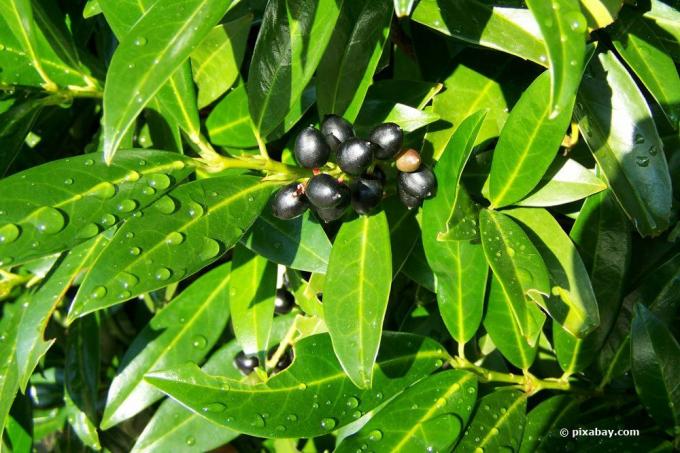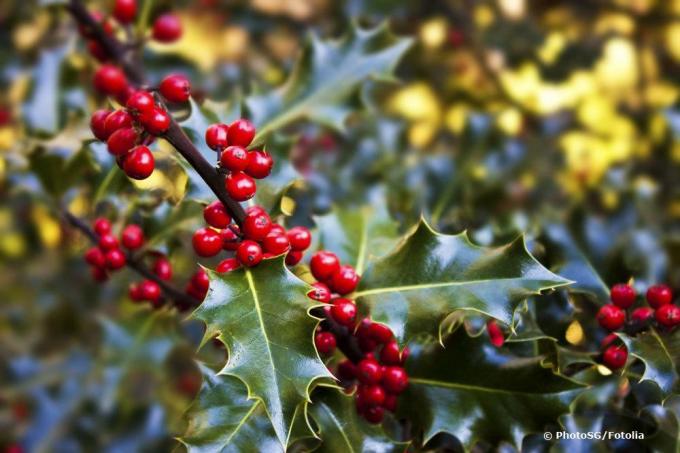
table of contents
- Toxicity
- Typical but poisonous hedge shrubs
- Boxwood
- yew
- broom
- Common laburnum
- liguster
- Cherry laurel
- Snowberry
- Holly
- Juniper
- Cotoneaster
Hedges have always been part of our cultural area, be it to delimit fields and kitchen gardens, or as a decorative frame for the Ornamental garden, as a natural privacy and noise protection of our living environment or as an enriching living space for many Animal species. But especially when hedges in the context of domestic outdoor facilities are easily accessible to people, especially children, and also animals, should When planting the hedge plants, one question should never be ignored: The question of whether the bushes used are poisonous, or not. Because the green enrichment of one's own environment is too easy to endanger the beloved pet, or even one's own child. Here you can find out which of the bushes that are repeatedly used in hedges are poisonous.
Toxicity
Not all poisonous is poisonous
When asked about the toxicity of shrubs, the obvious question that arises is how toxic the respective plant is. Is it just the consumption of large quantities of your fruit that is critical, or does the negative influence occur when the skin comes into contact with the sap? But even in order to be able to answer this question at all, a second question must be asked - namely, for whom the hedge plants considered are poisonous. Because what can be at most unpleasant for adults, for example, can have critical and even life-threatening effects on small children. Therefore, the poisonous hedge plants can only be considered with differentiation between the degree of toxicity and the organisms affected.
Typical but poisonous hedge shrubs
Boxwood
- Brief description: fast growing, evergreen bush or small tree
- Botanical: Buxus sempervirens
- IncludedPoison: Alkaloid cyclobuxin D
- Toxic ingredients: all plant components
- Toxic to: Generally toxic to animals and humans, but due to the strong bitterness of the plant components accidental consumption or contact only for previously injured people, or infants and toddlers dangerous
- follow: Skin irritations after intensive contact with the juice; if consumed in excess, vomiting and cramps up to death from cardiac and respiratory paralysis
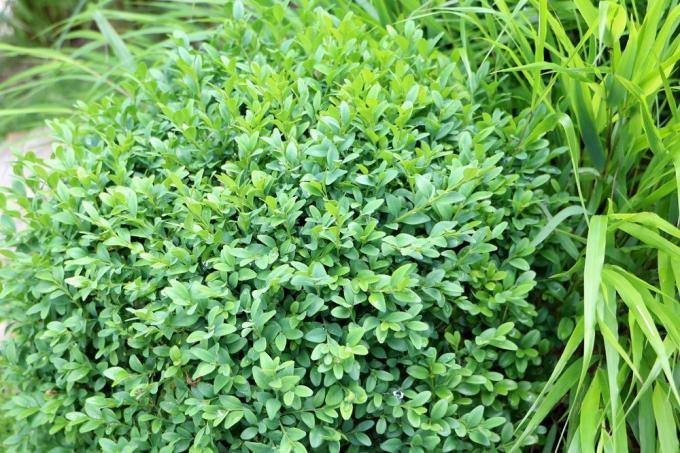
yew
- Brief description: solitary, densely growing conifer that forms an almost impenetrable bond when used in hedges
- Botanical: Taxus baccata
- IncludedPoison: Taxin B (especially European yew), Paclitaxel (especially Pacific yew), Ecdysteron (all yew trees, hormone-like Substance that triggers metamorphosis in molting animals and significant effects on the organism in mammals may have)
- PoisonousComponents: Bark, needles, seeds, oil of needles
- Toxicfor: Humans and animals, already from 50 to 100 grams of yew needles deadly effects on adults, in small children correspondingly earlier
- follow: Vomiting, dizziness, poor circulation, loss of consciousness; Skin irritation from pure contact with oil or plant sap

Attention: For the yew tree, deaths from poisoning have been documented for people as well as for cattle and horses. The considerable impact on large organisms is illustrated by the intensity of the toxins it contains.
Note: The pulp of the yew tree is non-toxic and is sometimes even classified as edible. However, since the seeds themselves are highly poisonous, children should never come into contact with the berries of the yew tree without supervision. Consumption of the pulp by humans is generally not recommended, as the risk is great is to damage the seeds when separating seeds and meat and thus to toxic components transfer.
broom
- Brief description: up to two meters high, expansively growing solitary shrub with bright yellow butterfly flowers
- Botanical: Genista
- Contained poison: Sparteine
- Toxic ingredients: Seeds, leaves
- Toxic to: Humans and animals, in the animal kingdom from birds to horses and cows, known symptoms of poisoning
- follow: Nausea, stomach and intestinal problems, circulatory problems, increased urine output

Note: Since the toxin of the gorse, in addition to the effects described, also increases the activity of the Leads to the uterus, especially pregnant women should have intensive contact with this representative of the hedge bushes avoid. Otherwise there is an increased risk of premature births or miscarriages.
Common laburnum
- Brief description: Spreading single shrub up to six meters high and up to 30 centimeters long, intensely yellow flower umbels
- Botanical: Laburnum anagyroides
- IncludedPoison: Alkaloid cytisine, laburamine, laburnine and N-methylcytisine
- PoisonousComponents: entire plant with all components, unchanged toxic even when dried, highest toxicity content in seeds
- Toxicfor: From a biological point of view harmful to humans and animals, but especially critical for small children because of play inviting seeds and flowers and easily swallowed components, symptoms of poisoning from 2 to 3 seeds detectable
- follow: Nausea, prolonged and sometimes bloody vomiting, burning sensation in the mouth and throat, dizziness, circulatory problems
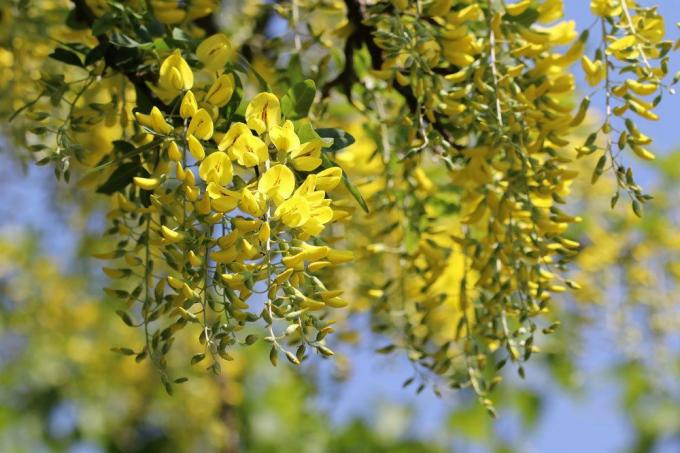
liguster
- Brief description: up to three meters high shrub with white flowers, from which black, pea-sized berries develop, which remain on the shrub even in winter
- Botanical: Ligustrum
- IncludedPoison: not clearly clarified, often referred to as Ligustron
- PoisonousComponents: Bark, leaves, berries, in the case of berries, skin irritation is already evident, especially when the skin comes into contact with the juice
- Toxicfor: People and especially young children, pets
- follow: Vomiting and diarrhea, headache
Cherry laurel
- Brief description: up to four meters high bush, dark green colored, elongated leaves, white fragrant flowers, later up to 10 cm long grapes with dark, reddish-black berries
- Botansich: Prunus laurocerasus
- Contained poison: Glycosides containing hydrocyanic acid
- PoisonousComponents: Leaves and seeds, pulp, on the other hand, almost non-toxic
- Toxicfor: theoretically humans and animals, but in practice mostly only occurs when chewing the seeds, therefore primarily dangerous for small children, but even then seldom significant due to the small amount of contact Impairments
- follow: Nausea and vomiting, irritation of the oral cavity, stomach and intestines; in the case of intense poisoning, theoretically even paralysis of the respiratory center, resulting in death
Snowberry
- Brief description: one to two meter high shrub with pink, bell-shaped flowers and later white, spherical, fleshy berries
- Botanical: Symphoricarpos
- IncludedPoison: Saponins, as well as active ingredients of a toxic nature that have not been precisely identified
- PoisonousComponents: Berry
- Toxicfor: primarily humans, but from a practical point of view mainly toddlers because of the play value of the berries (e. B. by crushing the berries, which often pop loudly)
- follow: Inflammatory skin reactions on contact with berry juice, if swallowed nausea and vomiting, as well as diarrhea; Signs of poisoning, however, only with larger quantities, 3 to 4 berries usually still without any noticeable effects
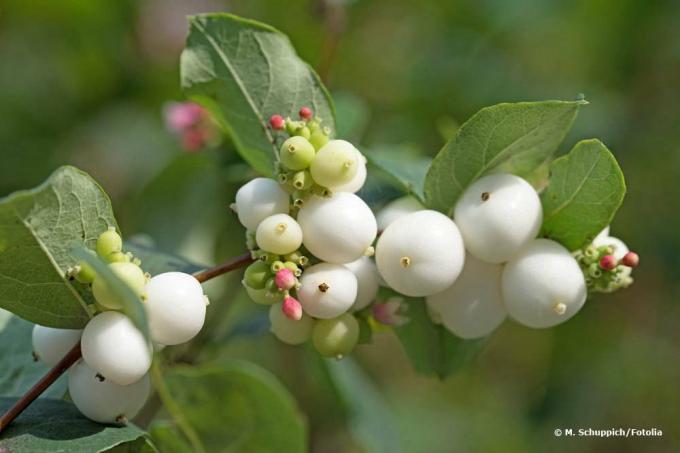
Holly
- Brief description: Shrub or tree up to 10 meters high, evergreen, glossy and serrated leaves, characteristic umbels with bright red berries
- Botanical:ilex
- IncludedPoison: Urolic acid and polyphenols
- PoisonousComponents: Berries and leaves
- Toxicfor: Humans and mammals, symptoms of poisoning documented in numerous domestic and farm animals, in small children symptoms can be detected from one or two berries, from approx. 10 berries Danger to life!
- follow: Vomiting, stomach and intestinal problems, diarrhea, sometimes cardiovascular damage
Juniper
- Brief description: Shrub with columnar to cylindrical growth, height of up to 12 meters, coniferous plant with inconspicuous flowers and dark bluish to black berries (botanically actually cones)
- Botanical: Juniperus
- IncludedPoison: does not contain any directly toxic substances, but has a harmful effect after prolonged and intensive contact
- PoisonousComponents: Berries and oil of needles
- Toxicfor: People with kidney damage, young children and infants
- follow: Further kidney damage if the berries are consumed for a long time, skin irritation if the oil is used undiluted
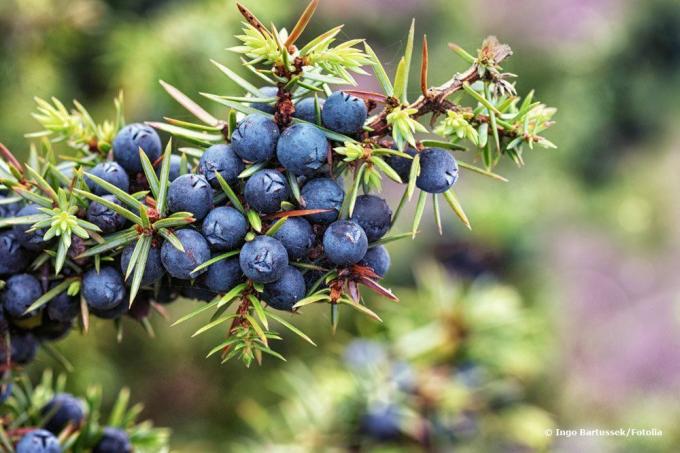
Cotoneaster
- Brief description: Evergreen hedge plants or trees, small lenticular leaves, bright red berries along the branches, classic as ground cover, but also popular for hedges
- Botanical: Cotoneaster
- IncludedPoison: Prunasin, glycoside amygdalin
- PoisonousComponents: Bark, flowers, leaves, berries
- Toxic to: already weakened people, especially small children, only have a harmful effect when the amount is around 10 berries and more, therefore mostly only dangerous for children without parental supervision
- follow: Nausea, diarrhea, throat irritation, swelling of the lips and mouth

Note: Please note that this article does not in any way replace a visit to the doctor. There is no guarantee that medical statements are correct.
You will find detailed information on first aid in the event of poisoning and important information on poison control centers here.


